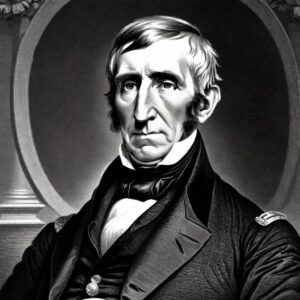The 25th Amendment to the United States Constitution is a crucial component of American governance, designed to ensure the continuity and stability of the executive branch. Ratified in 1967, this amendment clarifies the procedures for presidential succession and incapacity. To understand why the 25th Amendment was necessary, we must delve into the historical context, the specific issues it addresses, and the implications it has for the functioning of the U.S. government.
Historical Context
The need for a clear line of succession and procedures for handling presidential incapacity became evident through several historical events:
- William Henry Harrison’s Death (1841)
 :
:
- Harrison died just 32 days into his term, the shortest in U.S. presidential history. Vice President John Tyler assumed the presidency, but it was unclear whether he was acting as a temporary president or fully succeeded to the office. Tyler asserted full presidential powers, setting a precedent, but the lack of clear constitutional guidance was problematic.
- Abraham Lincoln’s Assassination (1865):

- Lincoln’s assassination brought Andrew Johnson to the presidency during a crucial period of Reconstruction. The sudden transition highlighted the need for a structured plan in the event of a president’s death.
- James A. Garfield’s Assassination (1881):

- Garfield was shot and lingered for 80 days before dying. During this time, there was significant uncertainty and debate over who should perform presidential duties. Chester A. Arthur eventually assumed the presidency, but the lack of clear procedures created confusion.
- Woodrow Wilson’s Stroke (1919):

- President Wilson suffered a severe stroke, leaving him incapacitated for the last 17 months of his presidency. His wife and close advisors managed many executive functions without formal authority, exposing the risks of an incapacitated president without a clear succession plan.
- Franklin D. Roosevelt’s Death (1945):

- Roosevelt’s death during World War II resulted in Vice President Harry S. Truman assuming the presidency. While the transition was smooth, the event underscored the necessity for a formalized process.
The Catalyst: Kennedy’s Assassination
The assassination of President John F. Kennedy in 1963 was the immediate catalyst for the 25th Amendment. Kennedy’s sudden death highlighted the vulnerabilities in the existing system. Although Vice President Lyndon B. Johnson assumed the presidency without incident, Kennedy’s death made it clear that the United States needed a more explicit and formalized process for presidential succession and dealing with presidential incapacity.
Key Provisions of the 25th Amendment
The 25th Amendment addresses four critical areas:
- Presidential Succession (Section 1):
- This section clarifies that if the President is removed from office, dies, or resigns, the Vice President becomes President.
- Filling a Vice Presidential Vacancy (Section 2):
- When the Vice Presidency is vacant, the President nominates a Vice President who takes office upon confirmation by a majority vote of both Houses of Congress. This provision ensures that the office of Vice President is never left vacant for long.
- Presidential Incapacity (Section 3):
- This section allows the President to voluntarily declare themselves unable to perform the duties of the office. The Vice President then becomes Acting President until the President declares they are able to resume their duties. This provision was designed to handle temporary incapacities, such as medical procedures.
- Involuntary Presidential Incapacity (Section 4):
- This is the most complex and controversial section. It allows the Vice President and a majority of the principal officers of the executive departments (or another body designated by Congress) to declare the President incapacitated. The Vice President then becomes Acting President. If the President contests this declaration, Congress must decide the issue, requiring a two-thirds vote in both Houses to keep the Vice President as Acting President. This section addresses situations where the President cannot or will not declare their own incapacity.
The Importance of the 25th Amendment
The 25th Amendment is essential for several reasons:
- Ensuring Continuity of Government:
- By providing clear guidelines for presidential succession and incapacity, the 25th Amendment ensures the continuity and stability of the executive branch. This is crucial for maintaining public confidence and effective governance, especially during times of crisis.
- Preventing Power Vacuums:
- The amendment prevents power vacuums that could arise from an incapacitated or deceased President. It ensures that there is always a functioning executive authority, ready to respond to national and international issues.
- Providing a Mechanism for Dealing with Incapacity:
- Prior to the 25th Amendment, there was no formal mechanism for dealing with a President who was incapacitated but still alive. The amendment provides a clear process for handling such situations, protecting the country from the risks of having an incapacitated leader.
- Strengthening Democratic Processes:
- By requiring congressional confirmation of a new Vice President, the 25th Amendment involves the legislative branch in the succession process, reinforcing the system of checks and balances fundamental to American democracy.
Conclusion
The 25th Amendment was a necessary addition to the U.S. Constitution, addressing significant gaps in the original framework regarding presidential succession and incapacity. By providing clear, structured procedures for these scenarios, the amendment has strengthened the resilience and stability of the American government. Its importance cannot be overstated, as it ensures that the executive branch can continue to function effectively, even in the face of unforeseen events.
